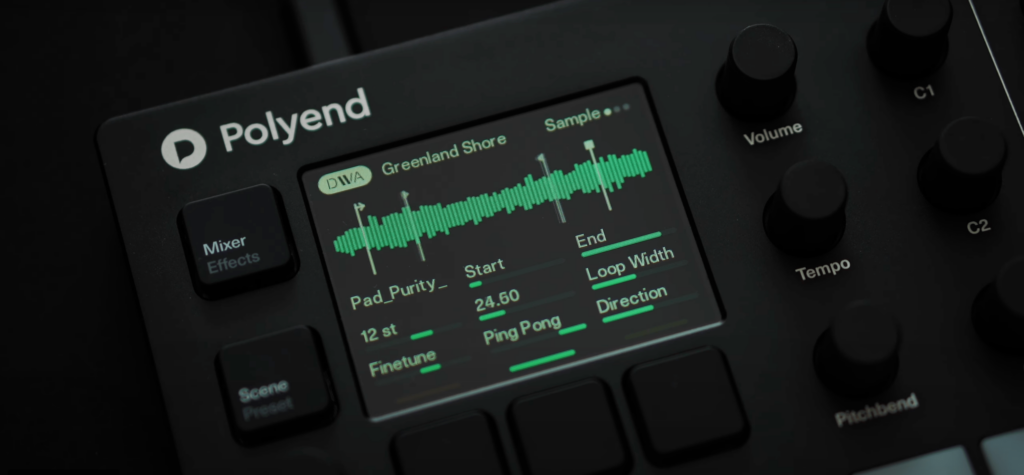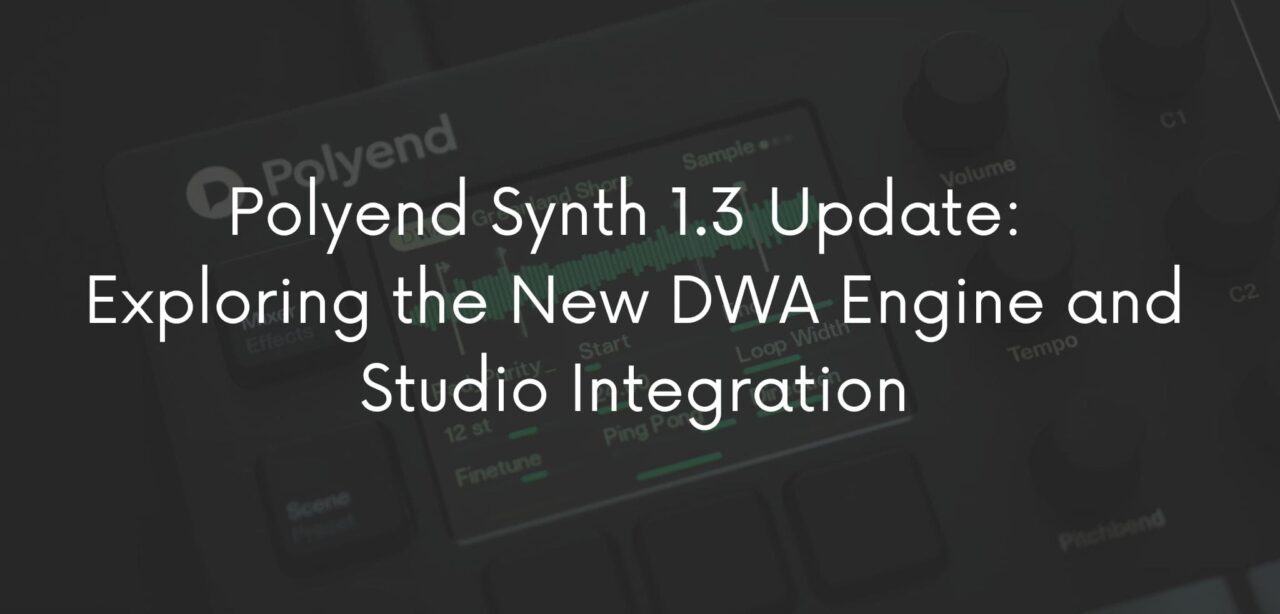Polyend Synth: The New Firmware Update That Transforms Your Studio
The latest update for the Polyend Synth is making waves across the electronic music scene. With the release of firmware version 1.3, Polyend introduces a breath of innovation and powerful new features that will make your productions more dynamic and expressive than ever. In this article, I’ll explore the most exciting additions—starting with the revolutionary DWA synthesis engine—and how to make the most of them in my studio workflow.

A New Synthesis Engine: Dual Waveform Architecture (DWA)
One of the most significant highlights of this release is the introduction of the Dual Waveform Architecture (DWA). Inspired by advanced research in digital synthesis, this engine allows you to layer two samples in parallel, each with unique creative capabilities:
- Versatile Playback Modes: Choose from One Shot, Loop, Synced Loop, and Ping-Pong modes. The DWA engine offers flexibility whether you’re building percussive loops or ambient textures.
- Total Control Over Samples: Forward and reverse playback, adjustable window size, pitch tracking, and delay effects give you a highly customizable sound design experience.
- Advanced Modulation Matrix: With two LFOs and three envelopes, nearly every parameter is modulatable, turning the synth into a powerful tool for any musical genre.
These features unlock endless creative scenarios—allowing producers to shift from aggressive, energetic sounds to dreamy, atmospheric textures with ease.
Studio Workflow: My Personal Experience
As a long-time user of the Polyend Synth, this update genuinely surprised me with its expanded versatility. Here’s how I’ve incorporated it into my daily production workflow:
- Creating Unique Soundscapes: Layering two sample sources allows me to build rich, textured environments. In a recent session, I combined rhythmic loops with atmospheric elements to create dynamic, evolving soundscapes.
- Live and In-Session Performance: The new pad-to-MIDI mapping and support for both Channel Pressure and Polyphonic Aftertouch enable expressive real-time modulation. It’s now a go-to synth not just for studio work but for live sets where nuance is everything.
- Integration with Other Gear: Thanks to the ability to save and load custom MIDI mappings, I’ve fully integrated the Polyend Synth into my setup alongside other synths and controllers. The new multi-synth layout options (3-in-1 and 2-plus-1) allow me to work with multiple engines at once—expanding the tonal palette of my compositions.

Beyond the revolutionary DWA engine, firmware 1.3 delivers a series of improvements that significantly enhance the user experience:
- Pad-to-MIDI Mapping: Use the synth’s pads as a MIDI interface for more flexible playability and recording.
- Engine #10 for Custom Mappings: Save and recall specific MIDI configurations, making it easy to switch between setups in the studio or on stage.
- Full Aftertouch Support: The addition of Polyphonic Aftertouch support introduces a new dimension of expressiveness, turning each keypress into a modulation tool.
- Multi-Synth Layouts: Combine multiple synthesis engines to create complex, layered sound structures for rich arrangements.
These enhancements not only improve workflow but also open up broad creative possibilities across genres—from experimental techno to sophisticated ambient.
The Polyend Synth firmware 1.3 update marks a major leap forward in the world of synthesizers, offering unprecedented features and creative potential. Whether you’re producing in the studio or performing live, this instrument now delivers everything you need to innovate and stand out in today’s electronic music landscape.
👉 To stay updated with the latest Polyend developments, keep following my blog and visit the official Polyend Downloads page.

No Comments